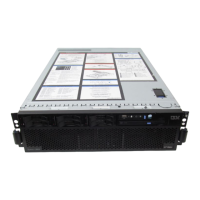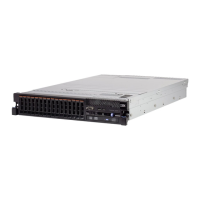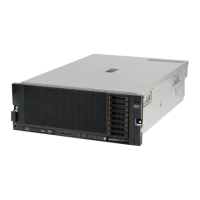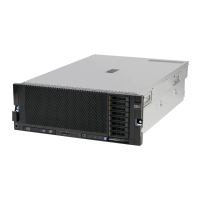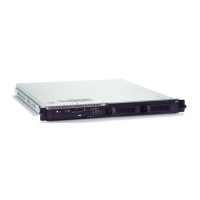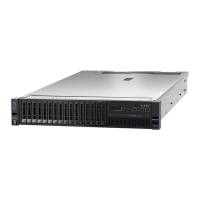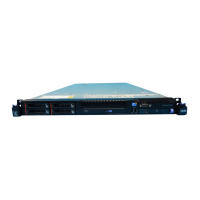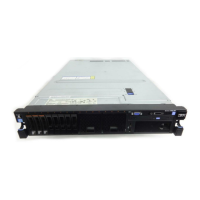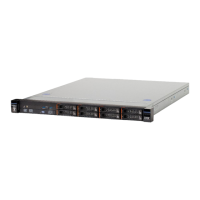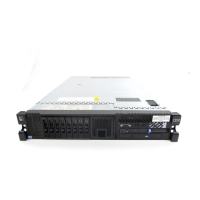312 IBM eX5 Implementation Guide
The recommended sequence of updates is shown in Table 7-2 on page 311. To update the
server to this firmware level or a higher level, you can use one of the following choices:
When you have a compatible OS installed, you can use the UpdateXpress System Packs
Installer (UXSPI) tool that is described in 9.11, “UpdateXpress System Pack Installer” on
page 511.
Regardless of the version of OS or when an OS is not installed, you can use the Bootable
Media Creator (BOMC) tool that is described in 9.12, “Bootable Media Creator” on
page 514.
After establishing a network connection and logging in to the IMM, use the firmware
update function, as described in 9.13, “MegaRAID Storage Manager” on page 521.
For the latest firmware requirements using the MAX5, see RETAIN tip H197572:
http://ibm.com/support/entry/portal/docdisplay?lndocid=MIGR-5085756
7.4.2 Installing in a rack
The QPI cables that are used to connect the MAX5 to the x3690 X5 are extremely short, stiff
cables that can be damaged easily. For this reason, that hardware ships with the MAX5 to
allow the MAX5 to attach to the x3690 through a series of brackets and rail kits. Install the
MAX5 and x3690 X5 in the rack before cabling them together.
The product publication IBM eX5 MAX5 to x3690 X5 QPI cabling kit installation instructions
documents the process to connect the MAX5 to the server. This document is available at this
website:
http://ibm.com/support/entry/portal/docdisplay?lndocid=MIGR-5085207
7.4.3 MAX5 cables
The QPI cables that are used to cable the x3690 X5 and the MAX5 are extremely short and
stiff. To plug the cables in, you must start the cable insertion on both sides of the cable into
the correct receptors on both the x3690 X5 and MAX5 at the same time.
Use the following tips when plugging in the cables:
QPI cables ship packaged with reusable plastic boots that protect the fragile outside
edges of the cable connectors, as shown in Figure 7-9 on page 313. It is a good idea to
keep a set of these plastic boots available for times when you want to remove the QPI
cables when moving equipment from rack to rack or when servicing the unit.
UEFI update is a two-step process: The UEFI flash is a two-step process. When the
UEFI flash has completed, the server must be warm-booted to at least the F1-Setup panel
to allow the second half of the UEFI flash to complete. Failure to perform the required
warm boot will result in a corrupt version of the UEFI, which will force the server to boot
into the recovery page of the UEFI until corrected by following the UEFI recovery process
in the Problem Determination and Service Guide (PDSG).
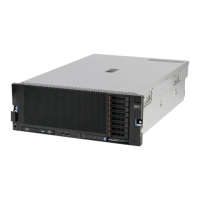
